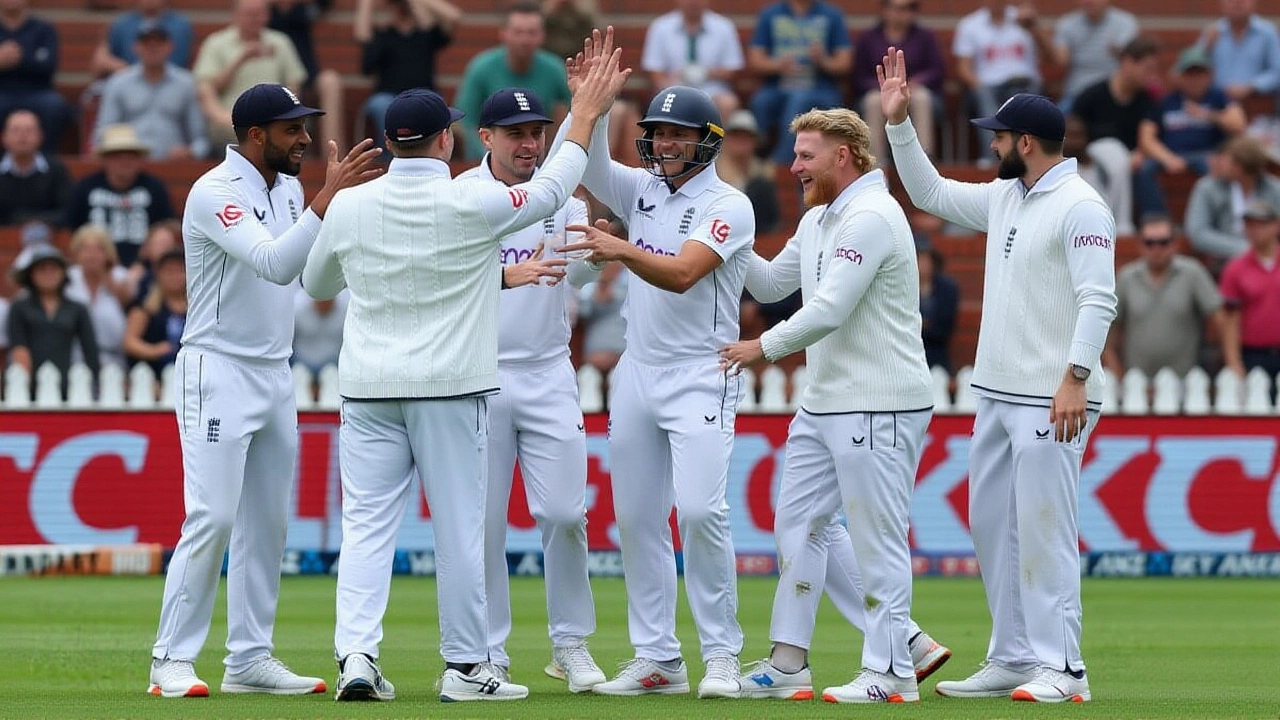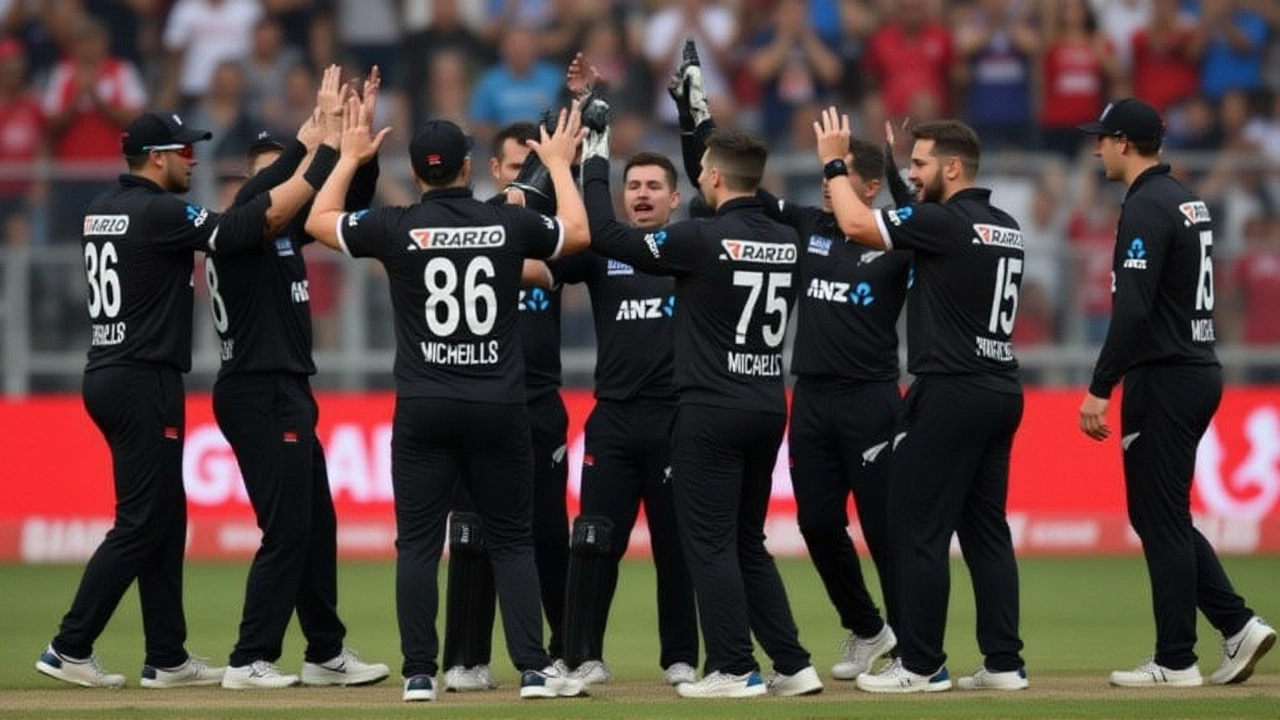When Blair Tickner stepped onto Seddon Park on October 29, 2024, few expected him to be the man who would crush England’s hopes. The 32-year-old fast bowler hadn’t played an ODI in over two years — his last appearance was in 2023 — but his return wasn’t just a fill-in. It was a statement. Replacing the injured Kyle Jamieson, Tickner delivered a spell that turned the tide in New Zealand’s favor, claiming four wickets as England collapsed to 175 all out in just 36 overs. New Zealand chased down the target in 33.1 overs, winning by five wickets and taking a 2-0 lead in the three-match series. This wasn’t just a win. It was history.
A comeback forged in hardship
Tickner’s journey back to international cricket reads like a screenplay. His wife has been battling cancer. A storm destroyed his father’s home. Financial strain, emotional exhaustion — you name it, he’s lived it. Yet he kept bowling. In Central Districts’ domestic match on October 26, he took 1 for 55 against Wellington. It wasn’t flashy. But it was enough. Head coach Rob Walter saw something deeper: discipline, aggression, and the kind of resilience that wins Tests — and now, ODIs. "Blair’s not a newcomer," Walter said. "He’s been around. He generates real pace from height, and he’s got that edge you can’t coach. He fits the role Jamieson played — and he did it better on this day."England’s batting implosion
England’s top order didn’t just fail — it disintegrated. Ben Duckett out for 3. Jamie Smith for 30. Joe Root for 50. No batter crossed 50. Harri Brook managed 34. Jamie Overton, England’s last hope, scraped 42 off 28 balls — too little, too late. The scoreboard read like a funeral dirge: 175 all out. The bowling attack, led by Tickner, didn’t just exploit conditions. They dismantled confidence. Nathan Smith added two wickets. The middle order never recovered.
New Zealand’s clinical chase
New Zealand’s reply wasn’t pretty, but it was efficient. Darryl Mitchell anchored the innings with a calm, unbeaten 56 off 82 balls. Rachin Ravindra countered with a fiery 54 from 64. But the real hero? Captain Mitchell Santner. With 17 balls left and 34 runs needed, he smashed 34 not out — 14 of them in one over. The crowd erupted. The series was sealed.History made on home soil
This win marked New Zealand’s first home ODI series victory over England since 2008 — a 17-year drought. It was also their first series win against England since 2013. The last time they swept a three-match ODI series at home against England? Never. The last time they won even one? 2013. This wasn’t just a turnaround. It was a reckoning. England, who won the T20I series 1-0 (two matches washed out), came into the ODIs with momentum. But their batting, so reliable in T20s, cracked under pressure. Their spinners were neutralized. Their pace attack — led by Mark Wood and Sam Curran — lacked rhythm. They looked like a team out of sync, while New Zealand, once again, looked like a unit built for pressure.
What’s next?
The final ODI, scheduled for November 2024 in Hamilton, is now a formality — unless England pull off a miracle. New Zealand will look to seal a 3-0 sweep, something they haven’t done against England in ODIs since 2002. Tickner’s role? Likely unchanged. His fitness and form have turned him from an afterthought into a cornerstone. And if he takes another four-wicket haul? He won’t just be remembered for this series. He’ll be remembered as the quiet warrior who came back from everything — and won it all.Frequently Asked Questions
Why was Blair Tickner selected over other fast bowlers?
Tickner was chosen because of his ability to generate pace from height — a trait similar to Kyle Jamieson’s — and his recent domestic form. With Jamieson injured, New Zealand needed a tall, aggressive option to exploit Seddon Park’s pitch, which offered bounce and seam movement. Tickner’s consistency in the Plunket Shield and his mental toughness stood out among other candidates.
How significant is New Zealand’s 2-0 lead over England in ODIs?
This is New Zealand’s first home ODI series win against England since 2008 — a 17-year gap. It’s also their first series win against England overall since 2013. Winning two matches in a row at home against England is rare; they’ve only done it twice since 2000. A 3-0 sweep would be historic — they’ve never swept a three-match ODI series against England at home.
What made England’s batting collapse so severe?
England’s top order — Duckett, Smith, Root — fell early to well-directed short-pitched bowling. New Zealand’s seamers, led by Tickner, consistently hit the corridor outside off-stump, forcing errors. England’s middle order lacked experience in high-pressure chases, and their spinners were ineffective on a pitch that favored pace. No batter scored over 50 — the first time England has failed to have a 50+ scorer in an ODI innings since 2021.
How has Mitchell Santner’s captaincy impacted this series?
Santner has transformed New Zealand’s ODI unit with calm decision-making and aggressive field placements. He backed Tickner despite his long absence, trusted Rachin Ravindra’s spin in the middle overs, and personally finished chases with fearless hitting. His 34 not out off 17 balls in the second ODI was the most explosive innings of his captaincy — and it broke England’s spirit.
What does this mean for New Zealand’s World Cup preparation?
This series is a major confidence boost ahead of the 2025 ODI World Cup. Tickner’s return proves depth beyond the usual suspects. Santner’s leadership is solidifying. The pitch conditions at Seddon Park mirror those expected in India and South Africa — meaning New Zealand now have real-world data on how to handle high-pressure chases and early collapses. They’re not just winning — they’re building.
Will Blair Tickner keep his place for the final ODI?
Almost certainly. With Jamieson still recovering and Tickner’s recent performance delivering results, the selectors are unlikely to disrupt momentum. His ability to bowl 10 overs with control and extract movement makes him ideal for Hamilton’s pitch. If he takes four more wickets, he could become the first New Zealander since 2007 to claim a four-wicket haul in his first ODI after a two-year absence.
